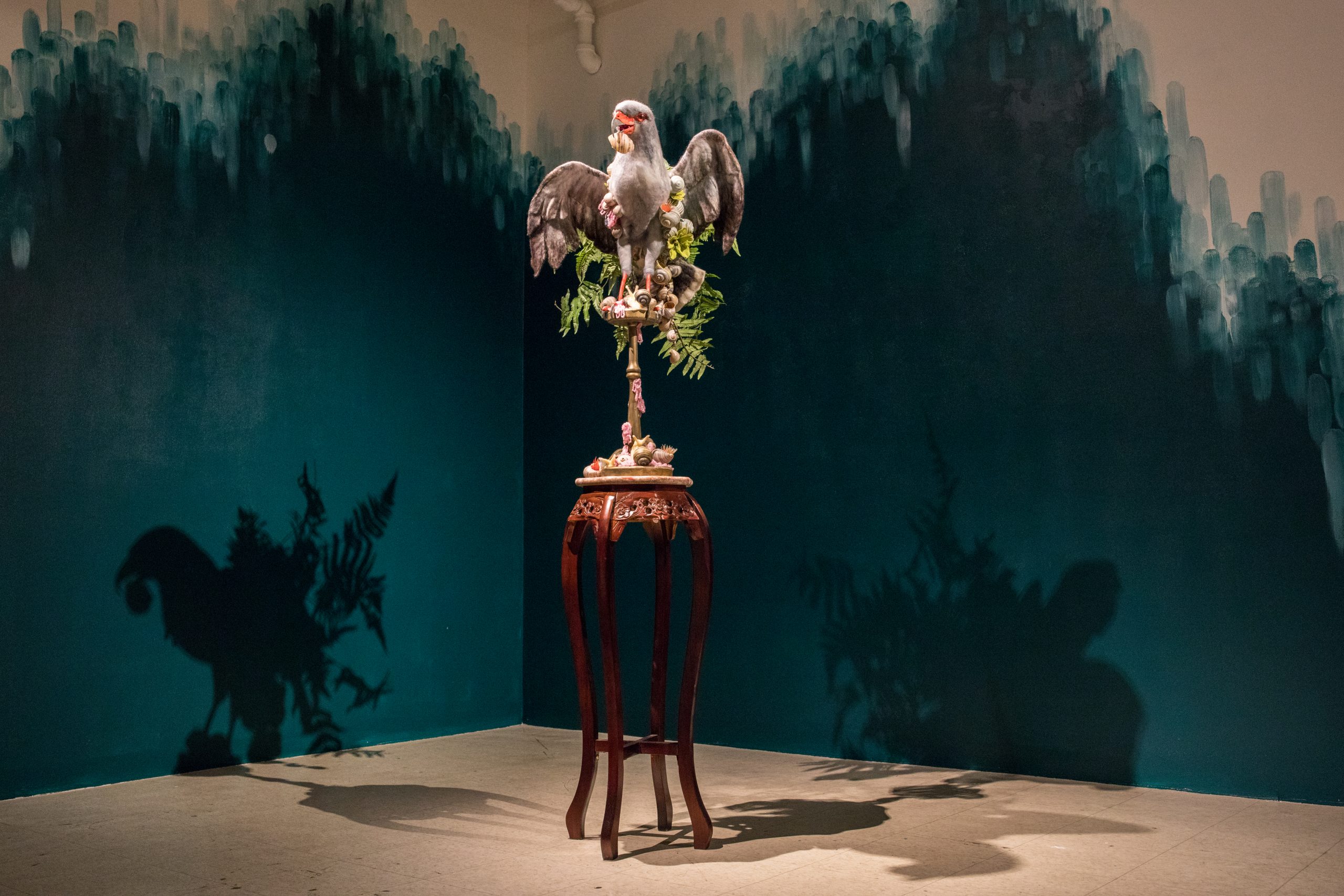During the pandemic, we can still partake in the joys of art in-person
I entered Art Mûr searching for a break away from my two-dimensional companion for the past several months — my screen — and let myself be immersed into the three-dimensional art of four artists. David Umemoto, Emily Jan and duo Hélène et son mari were my new companions for the next hour and a half as I wandered and wondered about their respective exhibitions and their sculptures, sculptures and sculptures.
David Umemoto’s Infrastructures are roofless edifications completely and complicatedly made in cement with dozens of stairs leading nowhere, or to the edge of somewhere. With structures complete with windows, arches and skylights facing the openness of the gallery, they all have an almost perfectly smooth finish of raw cement, that paradoxically feels as if decades of inhabitation by Escher-esque civilizations have passed. Maurits Cornelis Escher was a Dutch draftsman and graphic artist who is well-known for his mathematically inspired drawings and paradox spaces. His work has inspired the work of many artists and filmmakers, including Inception (2010). I could pin down many inspirations that come to my mind when I see Umemoto’s art pieces, but I cannot stop thinking about Ascending and Descending or Relativity, some of the lithographs where Escher reimagines architecture and reality. Each and every plinth is unique and infinite, demanding every window, door, corridor and corner to be inspected.
In my trance, the administrative director of the gallery Noémie Chevalier warmly welcomed me on a tour of the exhibitions. Leading me through Umemoto’s microcosmos, Chevalier told me about the artist’s architectural background. Umemoto, originally from Hamilton, Ontario, has a vivid interest in the passage of time, nature and human impact. This is concretely expressed in a collection of short videoclips of his sculptures being exposed to the elements, which played in a loop projected in the middle of the room.
I felt an immediate change of ambiance, from cold cement to warm jungle once we left Umemoto’s exhibition and entered Emily Jan’s The World is Bound by Secret Knots in the next room. Set at the back of Art Mûr’s ground floor, the dark green room was inhabited by magical creatures living luxuriously on vintage furniture. These hybrid mises-en-scène allowed me to slow down and better observe how they were made. As I got closer to the sculptures, made by the Californian artist who graduated from Concordia in 2014, I saw the creative use of unusual materials and textures to evoke issues of ecology and the human psyche. Jan’s creatures are sculpted using a mixture of wet felting and needle felting techniques that are evidently reminiscent of traditional methods of taxidermy. Chevalier and I stood between a snake made of stuffed fabric tangled to a branch that was emerging from an old table with a built-in sewing machine and a pair of majestic tropical birds, complete with floral feathers and a wooden shelf for a nest.
To the south of the equator’s ambiance, my guide and I climbed to the second floor to see the third and final exhibition from Quebecoise duo Hélène et son mari. Gradually, my eyes adjusted to the pastel colors predominating the space that Hélène Chouinard and Jean-Robert Drouillard jointly created. A character covered in a blanket welcomed us to Les couleurs de la terre, where many pieces of colorful ceramic emerged from faces and bodies made of wood. Each of the other human-like sculptures had their own personality and nuance. They all faced the back wall filled with dozens and dozens of ceramic bottles, handmade by Chouinard using an experimental colouring technique that incorporates the pigment directly with the clay. Closest to the stocked shelf were sculptures of twin boys, both named Leo, sculpted out of wood by Drouillard, and appeared to be painted with Chouinard’s colour palette. Chevalier led me around the floor, as she expressed her excitement for hosting the first exhibition where the name and work of Chouinard is highlighted, after years of collaborating in her husband’s shows.
As I analyzed the concentrated gaze of the sculptures towards the main piece, the thousand bottles, I rejoiced in the fact that I was finally not looking at art through a screen (although I do appreciate every opportunity to engage with art, of course).
There’s something about the tactile world of sculpture that is so fulfilling to experience in person, rather than online. The three exhibitions closed on Saturday, Oct. 24, but remain accessible in a series of videos on Art Mûr’s YouTube channel to reach the extended virtual public.
Photos by Christine Beaudoin.




